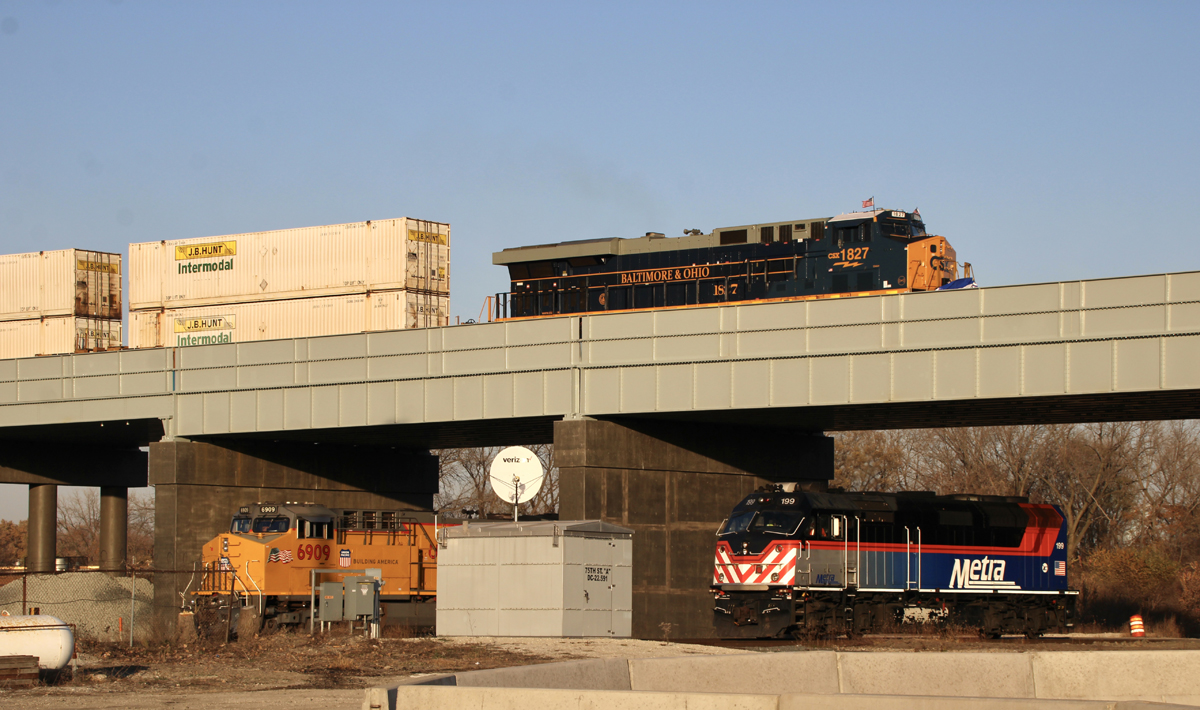
CHICAGO — Some projects of the Chicago Region Environmental and Transportation Efficiency, or CREATE, program are begun and completed with relatively limited fanfare.
That is certainly not the case with the Forest Hill Flyover, which carries the tracks of CSX Transportation over lines used by Norfolk Southern, Union Pacific, the Belt Railway of Chicago, and Metra. A ceremony today (Nov. 14, 2025) to mark the project’s completion is at least the fourth event at the CSX intermodal terminal next to the crossing since 2018, when the flyover and a related grade-crossing separation project achieved full funding.
There’s good reason this project — the 36th completed among the 70 on CREATE’s agenda — has been highlighted and celebrated so frequently, as noted repeatedly by officials on an unseasonably mild afternoon on Chicago’s South Side. The flyover, which opened Oct. 15, eliminates the operational nightmare created by a pair of diamond crossings that saw some 90 freight trains and 30 Metra trains most days, as well as Amtrak’s triweekly Cardinal. Cook County Board President Toni Preckwinkle called it “a bottleneck that slowed freight and commuter trains, disrupted businesses, and affected the daily lives of thousands of our residents.”
Cook County Commissioner Stanley Moore said in elaboration, “Anyone who has spent time near this junction knows that the trains were not just slowing down, they were parking. And when this slot became known as one of the worst freight bottlenecks in the entire country, it was not hard to understand why. So being here today, seeing real progress is not just satisfying, it’s meaningful.”

CSX CEO Steve Angel rattled off some of the statistics behind the project, which was led by his railroad: It required some 8,350 cubic yards of concrete, about 25 million pounds of steel, some 220,000 man-hours of labor, almost 27,000 feet of new track, and 26 new turnouts. And he also sounded a theme touched on by the majority of the day’s 13 speakers: that CREATE emphasizes what the combination of state, federal, local, and private effort can accomplish.
“We could not have completed this transformative project without your support and partnership,” Angel said to the program’s other partners. “… The CREATE program clearly showcases how smart investment and collaboration can deliver lasting value for the entire transportation system.”
Said Moore, “It’s proof that when we choose collaboration over conflict, we can build things that are lasting. So to everyone who contributed to this project, from the crews out here before sunrise to the teams that are writing the plans, months and years in advance, we thank you. You have created something very important, and it’s called progress.”
Officially a $380 million project, the flyover was funded by what was announced at the time as a $132 million federal grant awarded in 2018, as well as some $260 million in state, local, and railroad investment [see “Railroads commit to fund latest CREATE project …,” Trains.com, July 12, 2018]. (The federal funding was presented as “nearly $120 million” on Friday.) Preckwinkle said that included about $78 million from Cook County, which was not initially a part of the CREATE program launched in 2003.
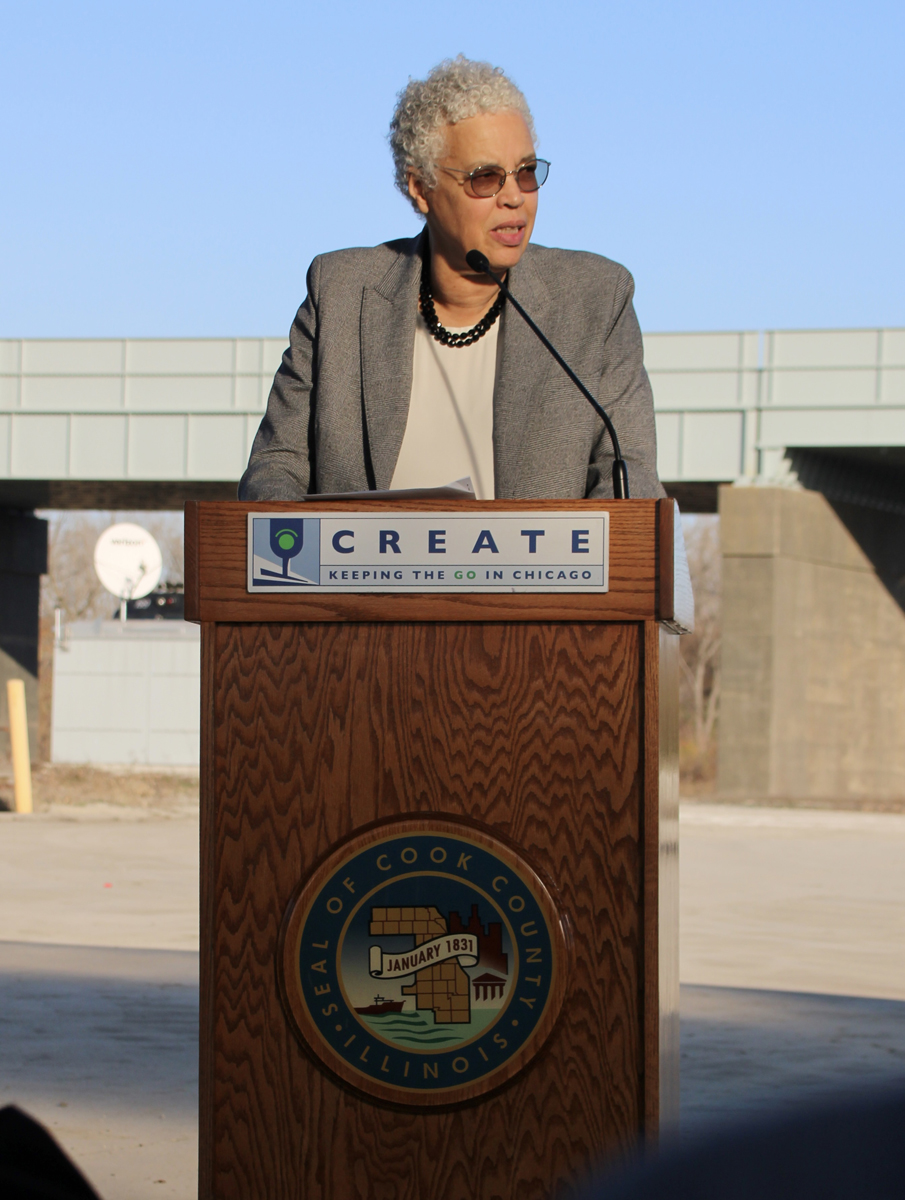
“And when I got this job in 2010, I noticed that omission,” Preckwinkle said. “… I cheerfully admit that we bought our way in. I’ve made transportation and infrastructure a priority, revamping how the county plans and prioritizes projects and strengthening how we collaborate with local, state and federal leaders to invest in our region.”
Perhaps because of the just-ended shutdown, Friday’s ceremony was bereft of any representatives of the federal government; Preckwinkle was the highest-profile elected official of any kind, a surprising development given that prior events at the site have included members of the U.S. Senate and House of Representatives, as well as Illinois Gov. JB Pritzker and Chicago’s mayor. What those folks missed to conclude the event was the previously impossible sight of a CSX intermodal train, led by the railroad’s Baltimore & Ohio heritage locomotive, passing above locomotives representing the site’s four other operators.
But should those officials venture into the area in the future, they certainly won’t miss the impact of the new structure.
“It’s jobs,” said Gia Biagi, secretary of the Illinois Department of Transportation. “It’s local community impact. … It’s keeping our businesses running, it’s making sure our families can get from where they are to where they need to be.
“I think we have something like 200 miles of train cars pass through here every day. You can only imagine without a flyover, without these safe grade crossings, what a challenge that is. These projects also bring that quality of life to the community.”
Now that the new bridge is in use, the railroads are wasting no time in erasing the memories of those troublesome at-grade crossings. A 12-hour operating outage — perhaps the last big service disruption of the project — is scheduled for Saturday to yank out the now-inactive diamonds.
— To report news or errors, contact trainsnewswire@firecrown.com.







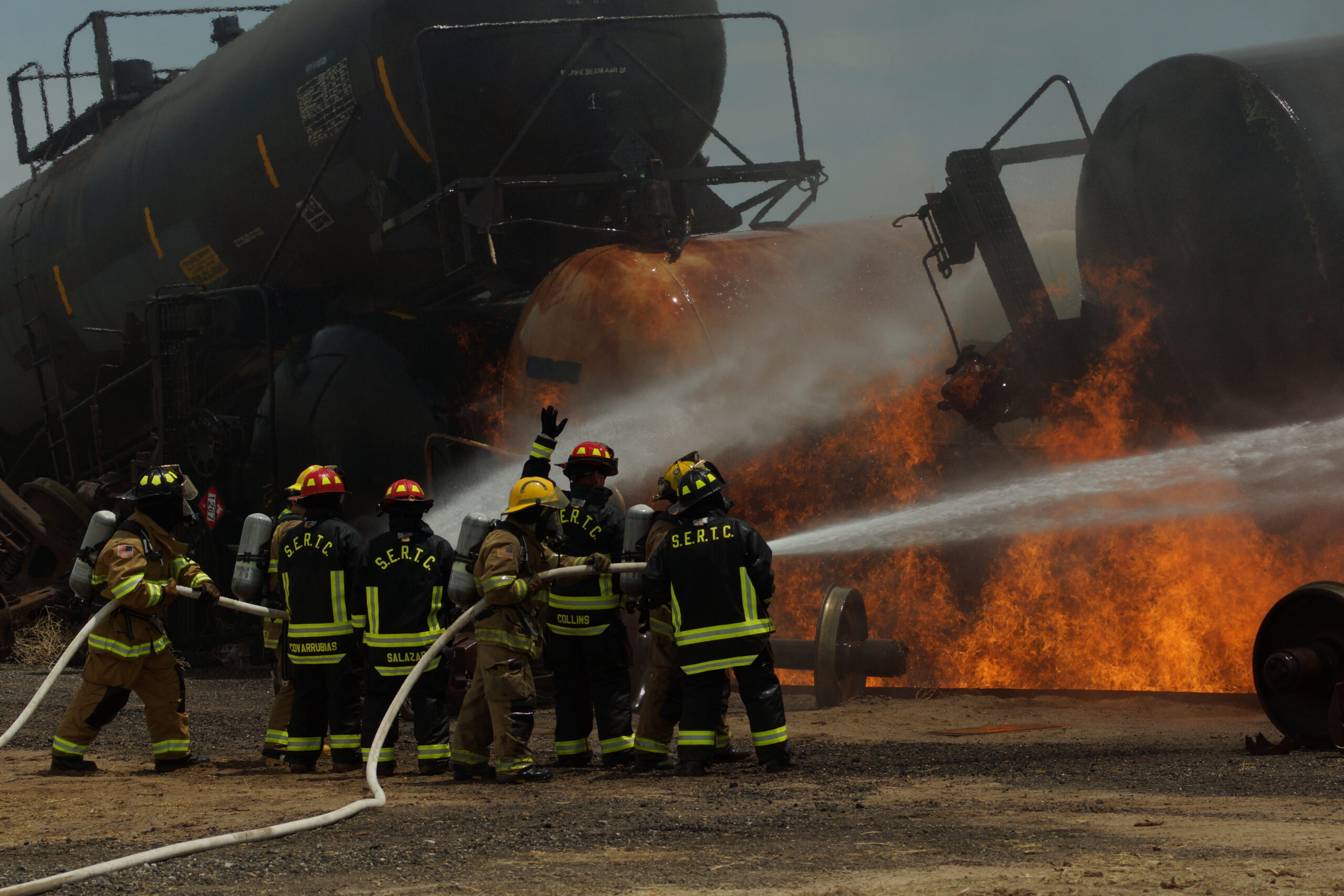

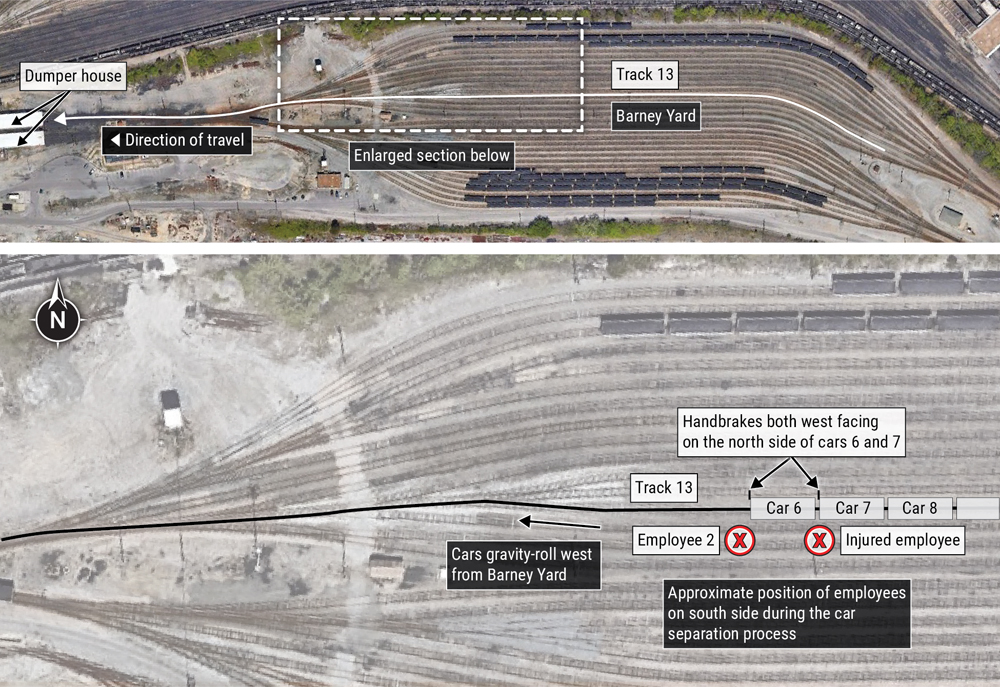

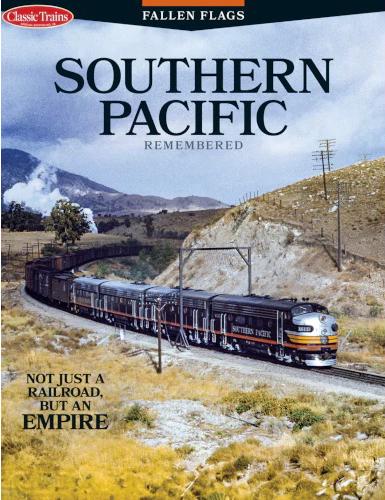

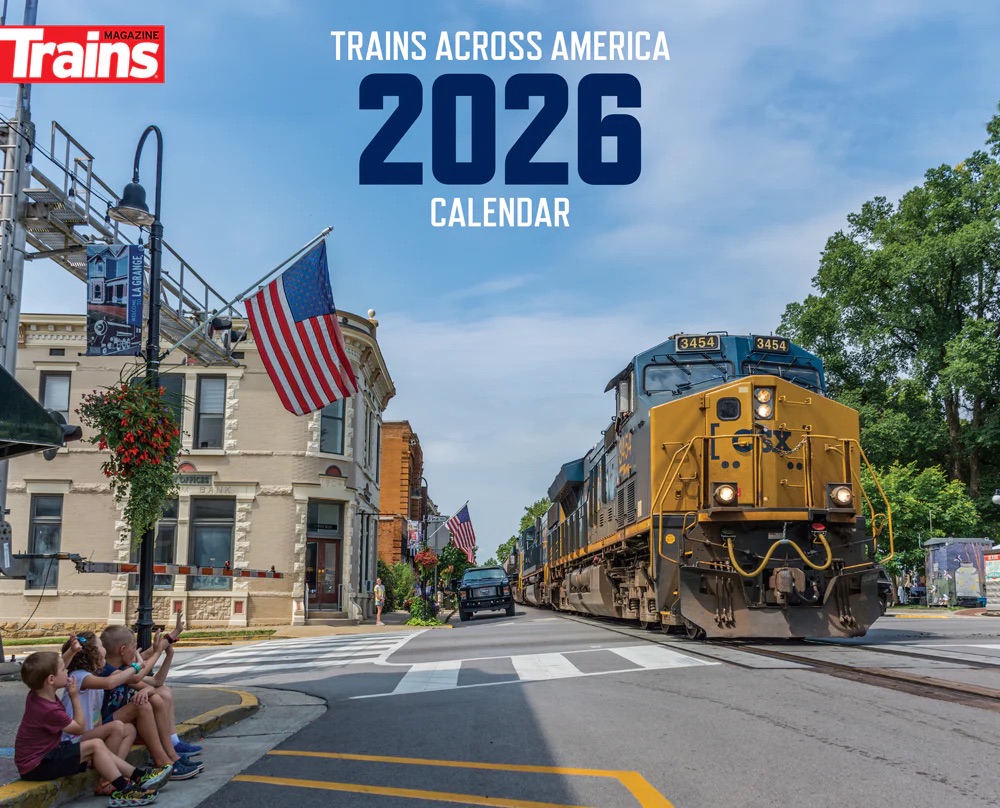
Chicago will become a rail ghost town once the stupid Class I’s complete their acquisition debacles.